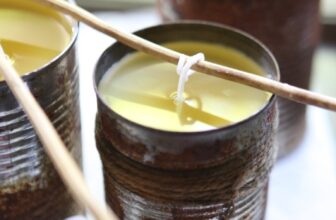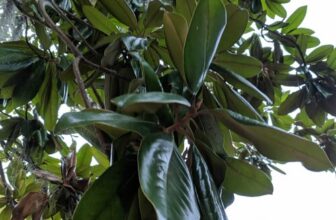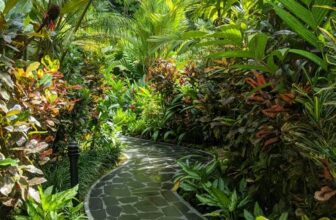Hi GPODers!
Today’s garden update comes from frequent contributor Beth Tucker in Waxhaw, North Carolina. Beth has shared her garden through the seasons (check out some of her previous submissions: A Look Back at Beth’s Early Summer Garden, Early Spring in Beth’s North Carolina Garden, Irises and More in Beth’s North Carolina Garden), and there is always something interesting to admire. Even with the extreme heat Beth has to contend with in the Southeast, she manages to curate a gorgeous array of color during the sweltering summer months. Below are some of the fabulous flowers she has enjoyed so far this year.
I love daylilies and have a large collection, mostly from Oakes Daylilies. These photos were taken before the horrific heat dome settled over us, with temperatures hovering around 100 degrees. The garden took a beating during the several weeks it lasted! We are having a welcome break now with lots of rain and much cooler temps, but the heat will return soon, hopefully not as bad as before. Ever notice how the weeds don’t seem to be bothered by brutal heat?
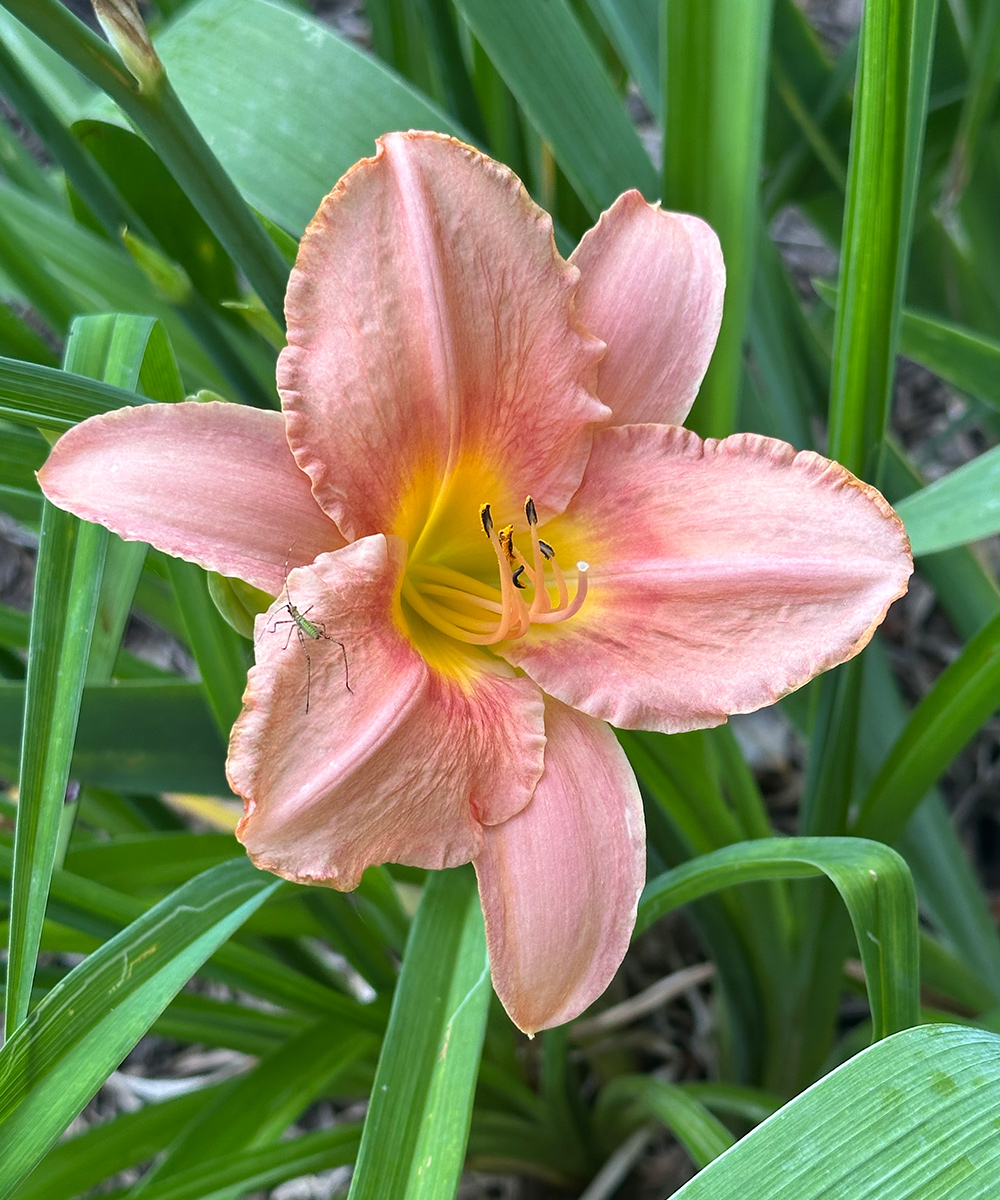 First up in Beth’s incredible daylily collection is this lovely cotton candy–colored ‘Corryton Pink’ (Hemerocallis ‘Corryton Pink’, Zones 3–9) cultivar. Daylilies might be best known for their brighter and bolder varieties, but I find the lighter shades to be just as attention-grabbing.
First up in Beth’s incredible daylily collection is this lovely cotton candy–colored ‘Corryton Pink’ (Hemerocallis ‘Corryton Pink’, Zones 3–9) cultivar. Daylilies might be best known for their brighter and bolder varieties, but I find the lighter shades to be just as attention-grabbing.
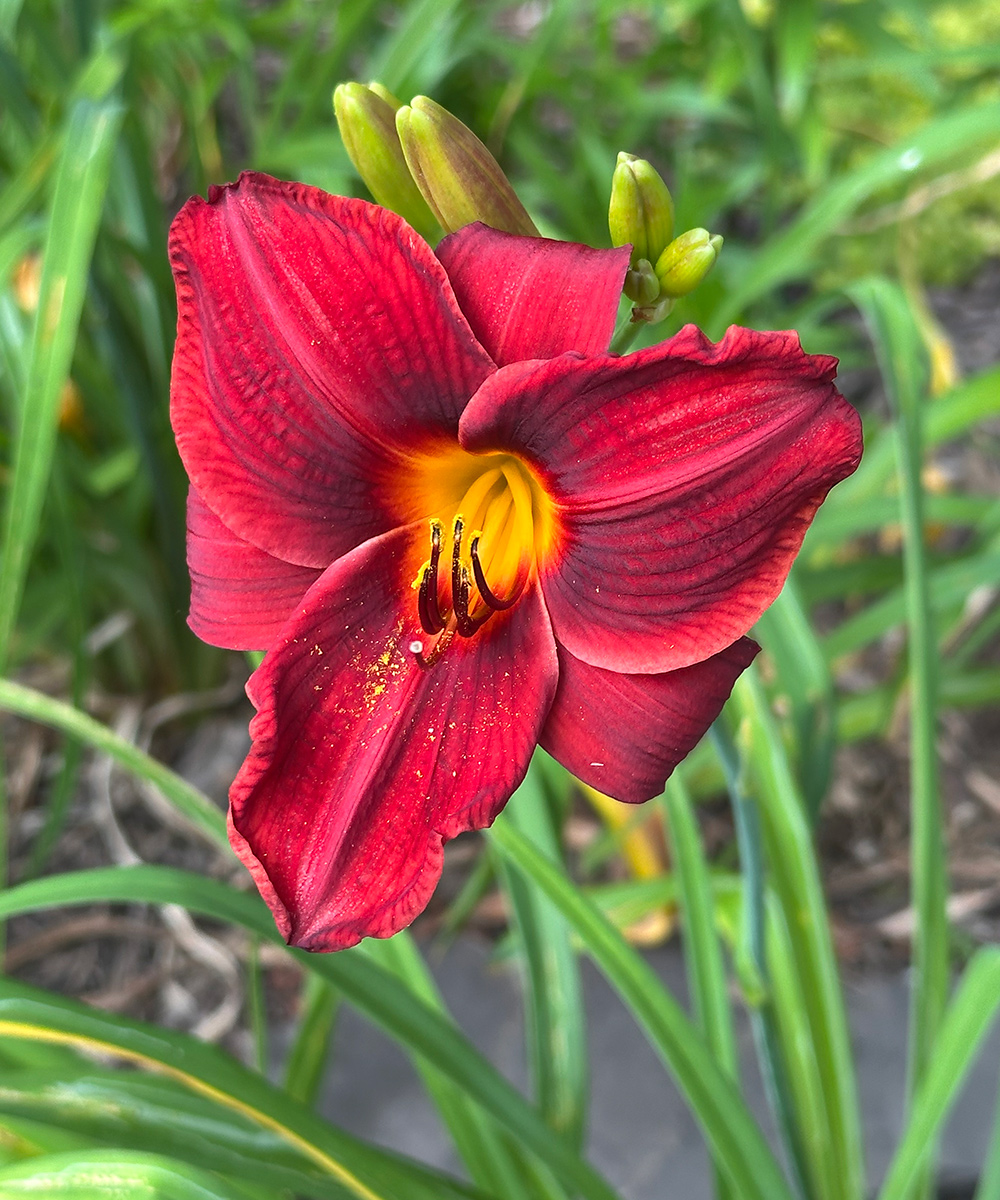 Speaking of bright and bold, Beth said that this red daylily is a volunteer. Who doesn’t love getting more of what we love for free in the garden?
Speaking of bright and bold, Beth said that this red daylily is a volunteer. Who doesn’t love getting more of what we love for free in the garden?
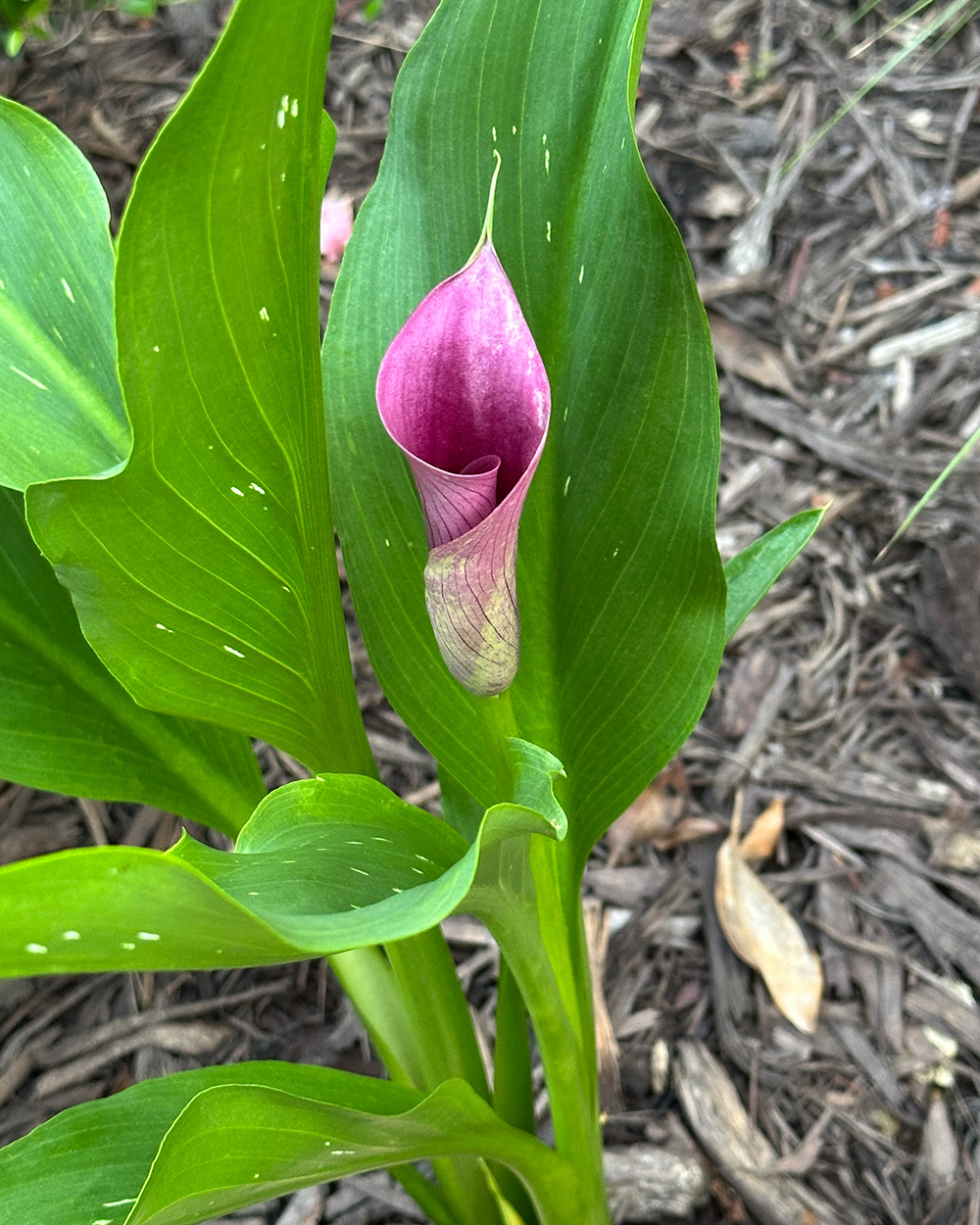 Of course, there are many more blooms to enjoy in Beth’s garden besides daylilies. This calla lily is a simple swirl of purply pink color, and the vibrant foliage wrapped around it is equally interesting with some subtle striping.
Of course, there are many more blooms to enjoy in Beth’s garden besides daylilies. This calla lily is a simple swirl of purply pink color, and the vibrant foliage wrapped around it is equally interesting with some subtle striping.
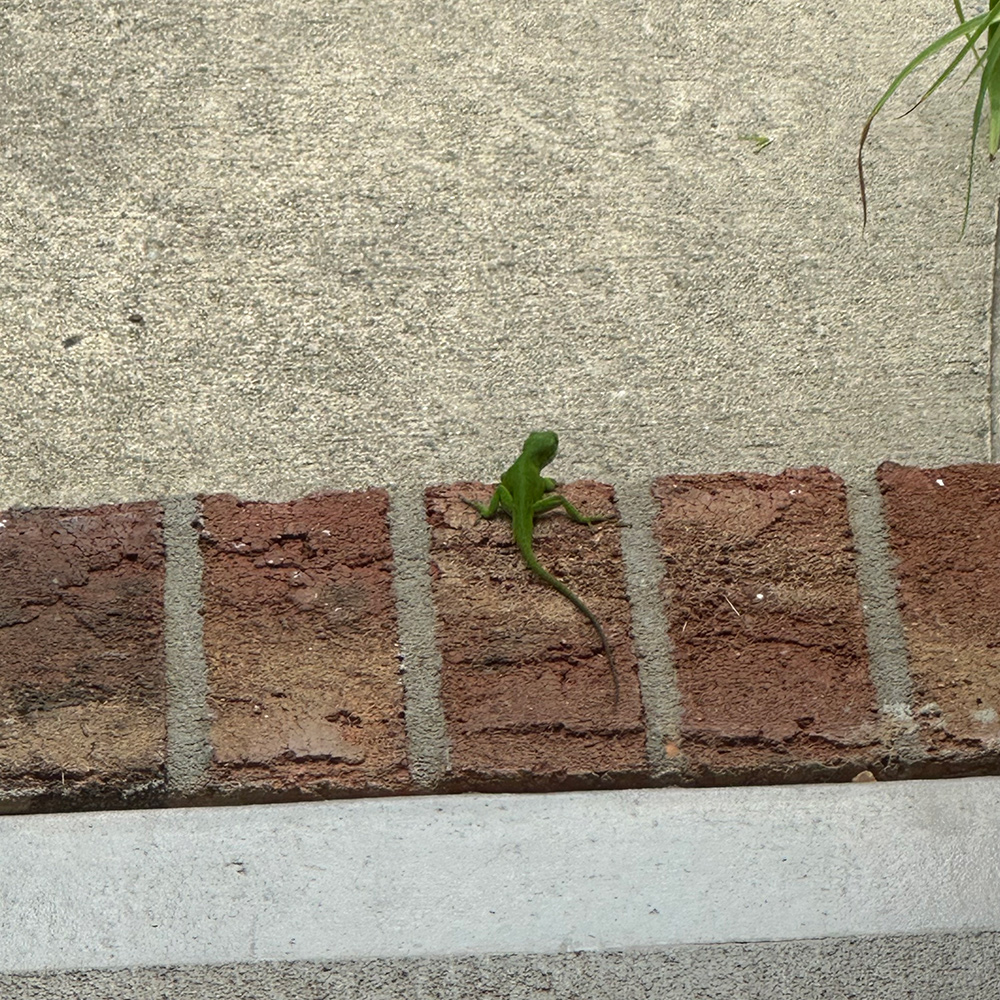 A little lizard also enjoys Beth’s gardens. She dubbed him The Guardian of the Front Porch.
A little lizard also enjoys Beth’s gardens. She dubbed him The Guardian of the Front Porch.
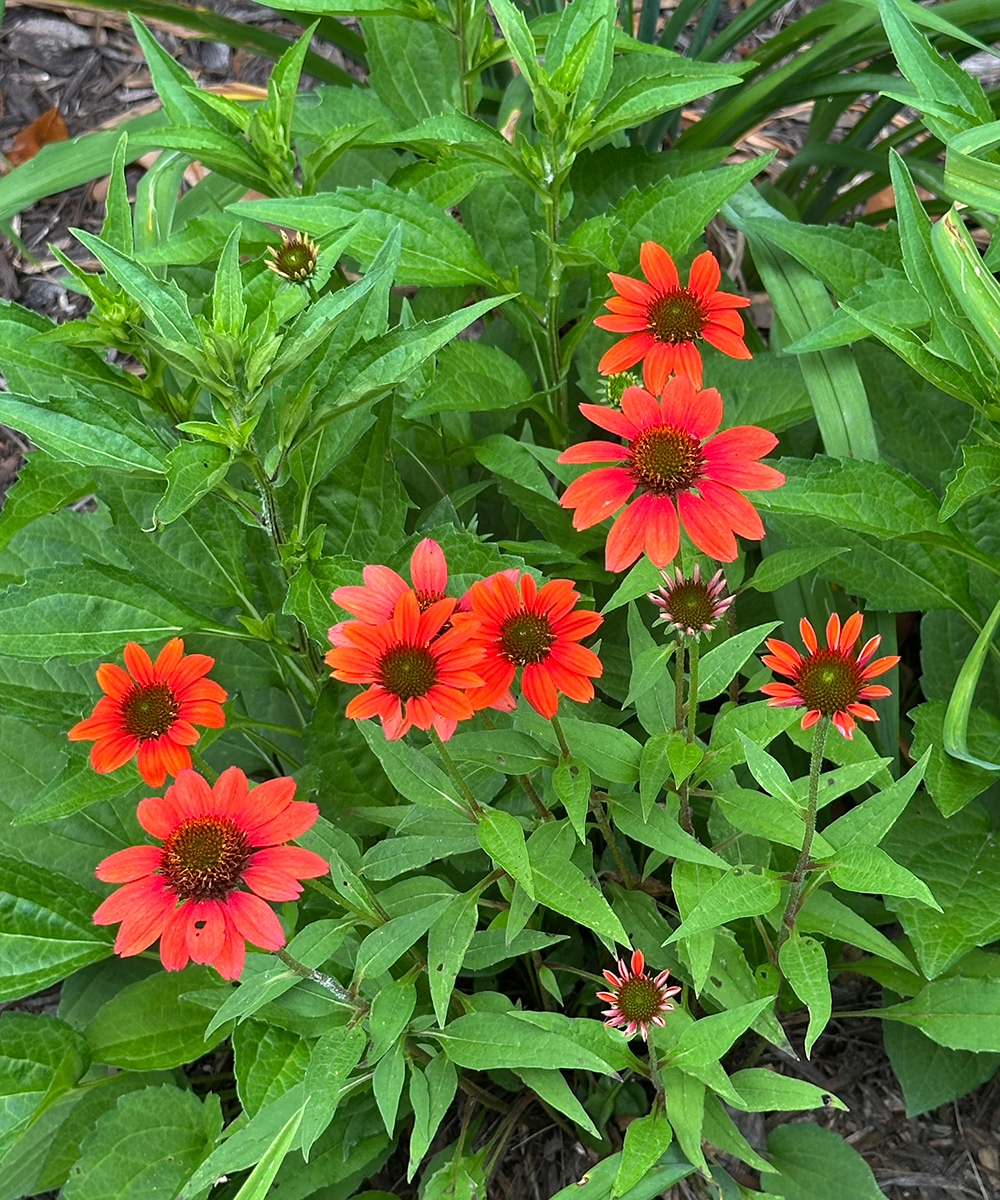 For a coneflower that produces hot blooms in a compact package, Sombrero® Hot Coral coneflower (Echinacea ‘Balsomcor’, Zones 4–9) is always a winner. Great as a cut flower, the bees and butterflies in Beth’s neighborhood must enjoy these blooms as much as she does.
For a coneflower that produces hot blooms in a compact package, Sombrero® Hot Coral coneflower (Echinacea ‘Balsomcor’, Zones 4–9) is always a winner. Great as a cut flower, the bees and butterflies in Beth’s neighborhood must enjoy these blooms as much as she does.
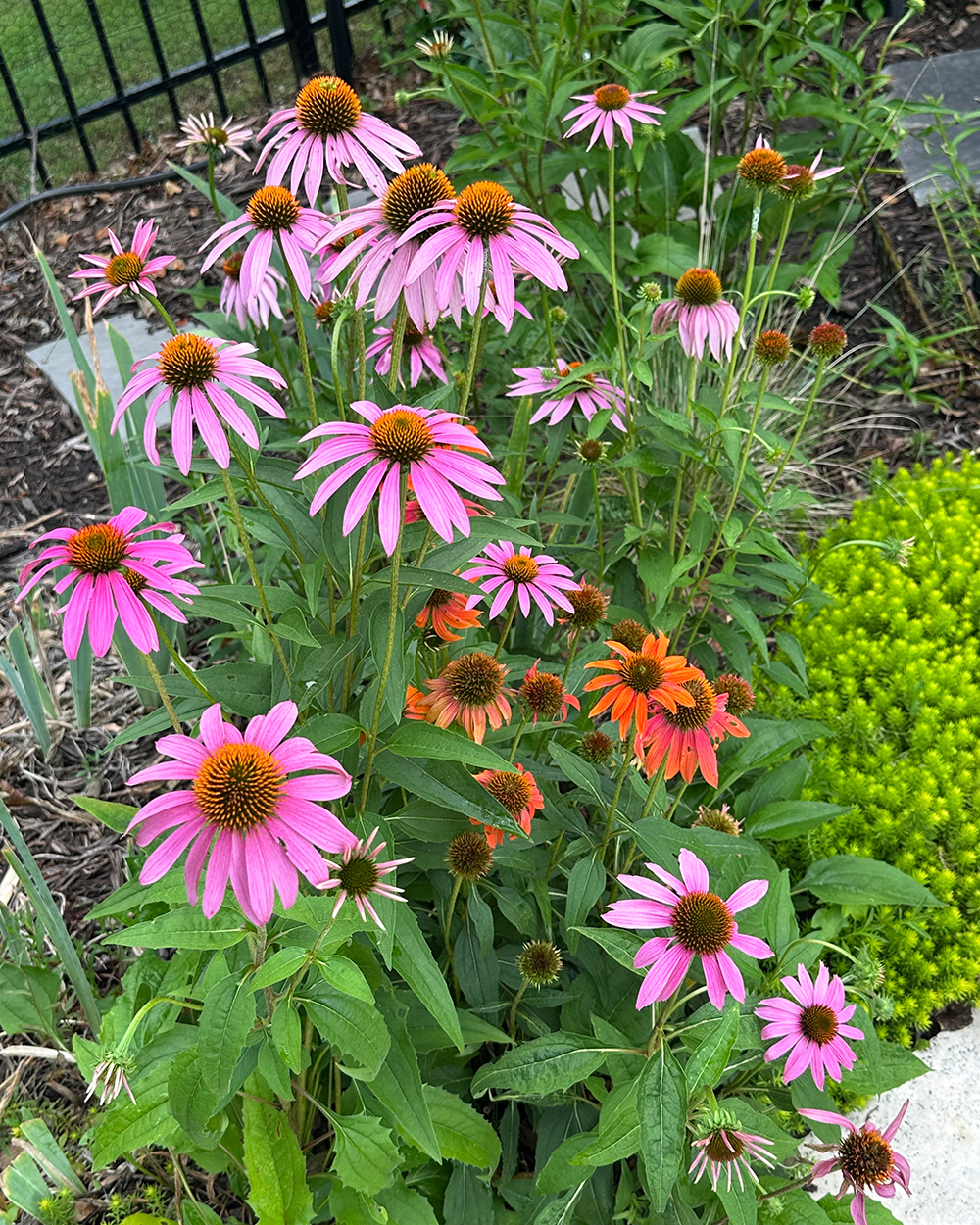 However, you can’t go wrong with the native and classic purple coneflower (E. purpurea, Zones 3–9) as well. It’s beauty and resistance makes it well-loved by gardeners and pollinators alike. This photo showcases the beauty of both plants and gives a great perspective on the more compact habit of the Sombrero® Hot Coral cultivar.
However, you can’t go wrong with the native and classic purple coneflower (E. purpurea, Zones 3–9) as well. It’s beauty and resistance makes it well-loved by gardeners and pollinators alike. This photo showcases the beauty of both plants and gives a great perspective on the more compact habit of the Sombrero® Hot Coral cultivar.
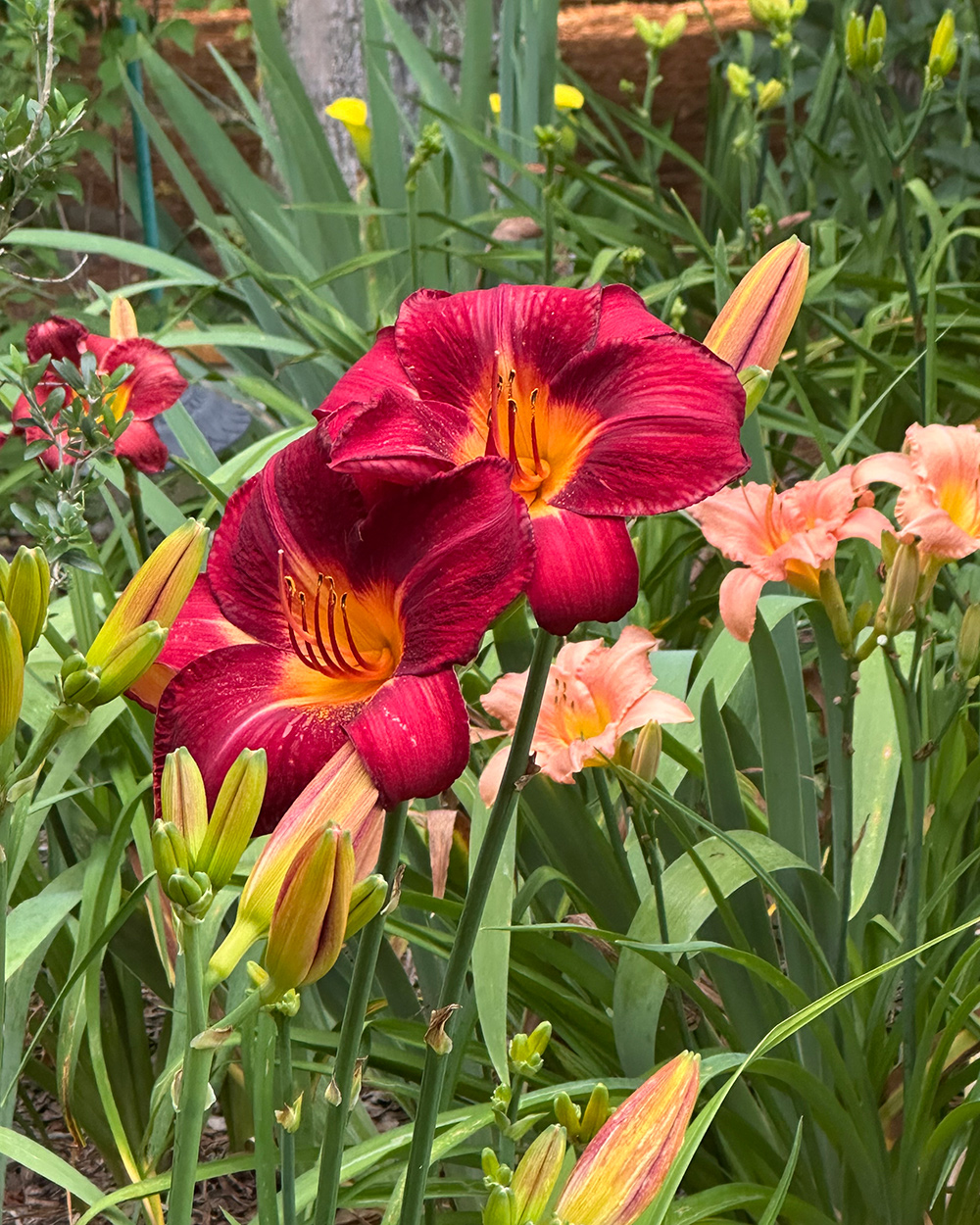 While Beth has a wonderful selection of vibrant blooms, it’s easy to see why she has added so many different daylilies to her landscape. Endless combinations can be crafted with all of the diverse cultivars.
While Beth has a wonderful selection of vibrant blooms, it’s easy to see why she has added so many different daylilies to her landscape. Endless combinations can be crafted with all of the diverse cultivars.
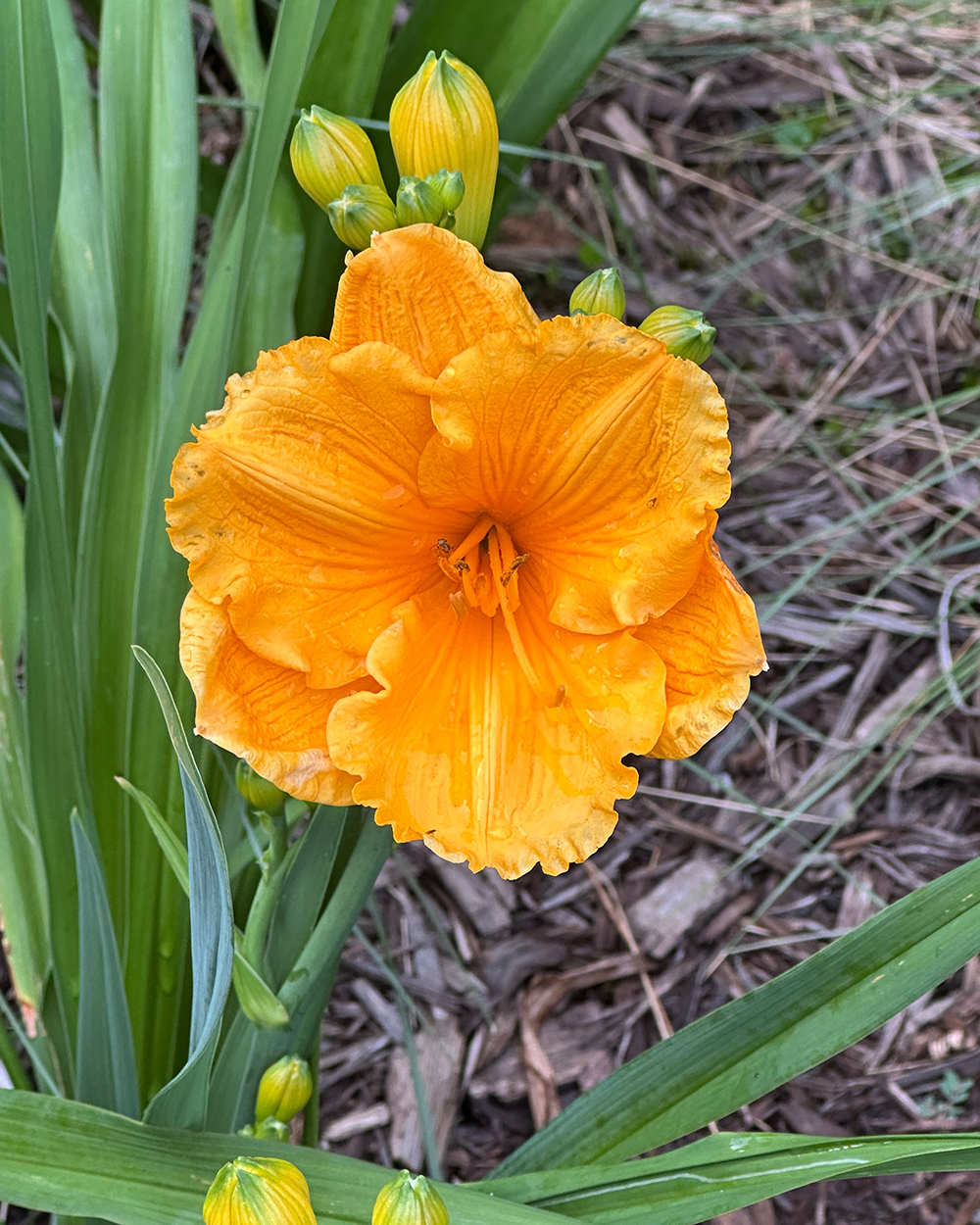 Another incredible specimen in Beth’s collection is a Siloam Nugget daylily (H. ‘Siloam Nugget’, Zones 3–9), which has wonderfully ruffled petals that are so wide they almost form a perfectly circular bloom.
Another incredible specimen in Beth’s collection is a Siloam Nugget daylily (H. ‘Siloam Nugget’, Zones 3–9), which has wonderfully ruffled petals that are so wide they almost form a perfectly circular bloom.
 Leebea Orange Crush (H. ‘Leebea Orange Crush’, Zones 3–9) and Frankly Scarlet daylilies (H. ‘Frankly Scarlet’, Zones 3–9) make for another sublime combination and explosion of color against a diverse foliage backdrop.
Leebea Orange Crush (H. ‘Leebea Orange Crush’, Zones 3–9) and Frankly Scarlet daylilies (H. ‘Frankly Scarlet’, Zones 3–9) make for another sublime combination and explosion of color against a diverse foliage backdrop.
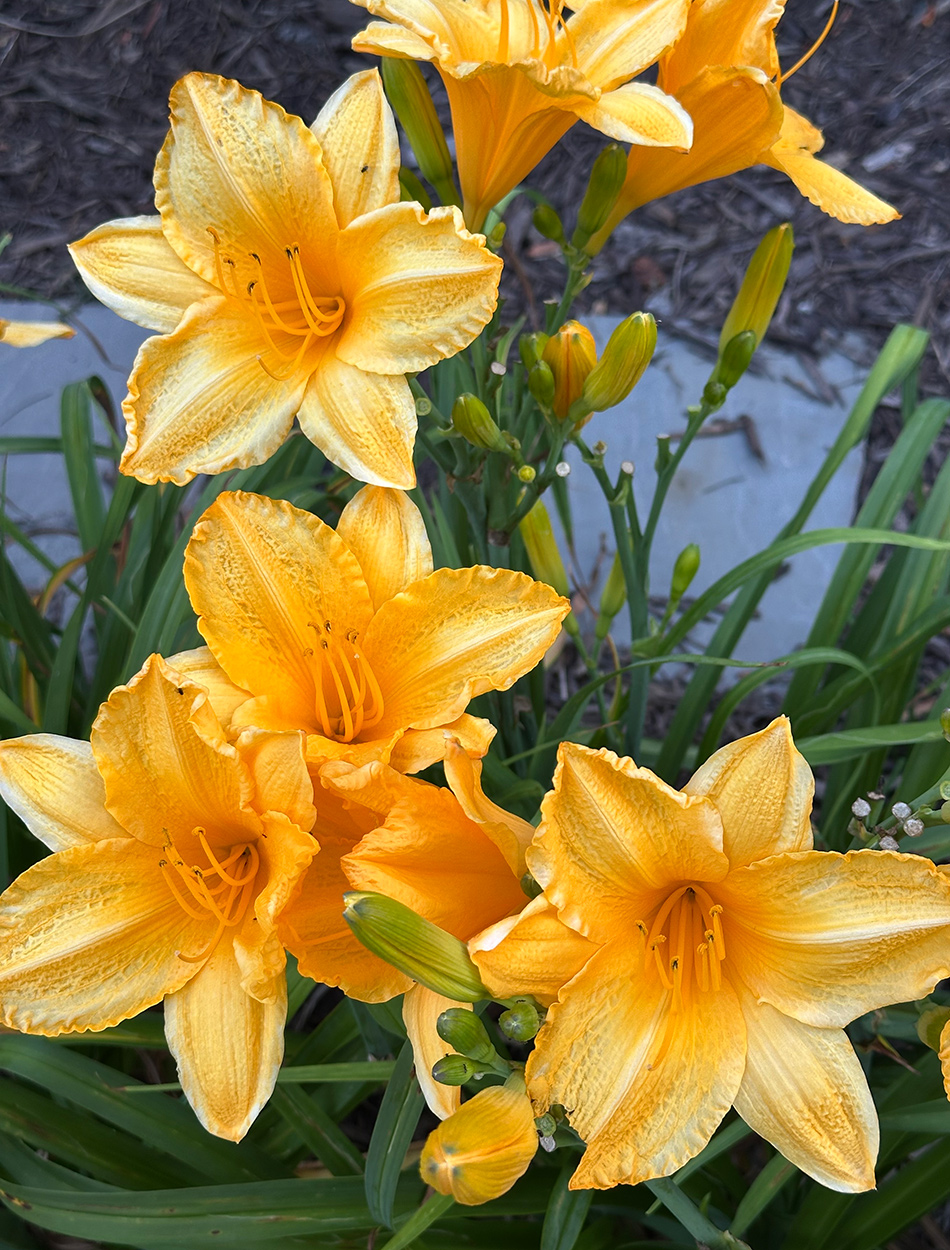 Golden Prize daylily (H. ‘Golden Prize’, Zones 3–9) is an apt name for this cultivar that is certainly a prize to have in the garden. These petals feature beautifully ruffled edges and also sport some incredible wrinkles and crinkles that add to the color variation and patterns on these blooms.
Golden Prize daylily (H. ‘Golden Prize’, Zones 3–9) is an apt name for this cultivar that is certainly a prize to have in the garden. These petals feature beautifully ruffled edges and also sport some incredible wrinkles and crinkles that add to the color variation and patterns on these blooms.
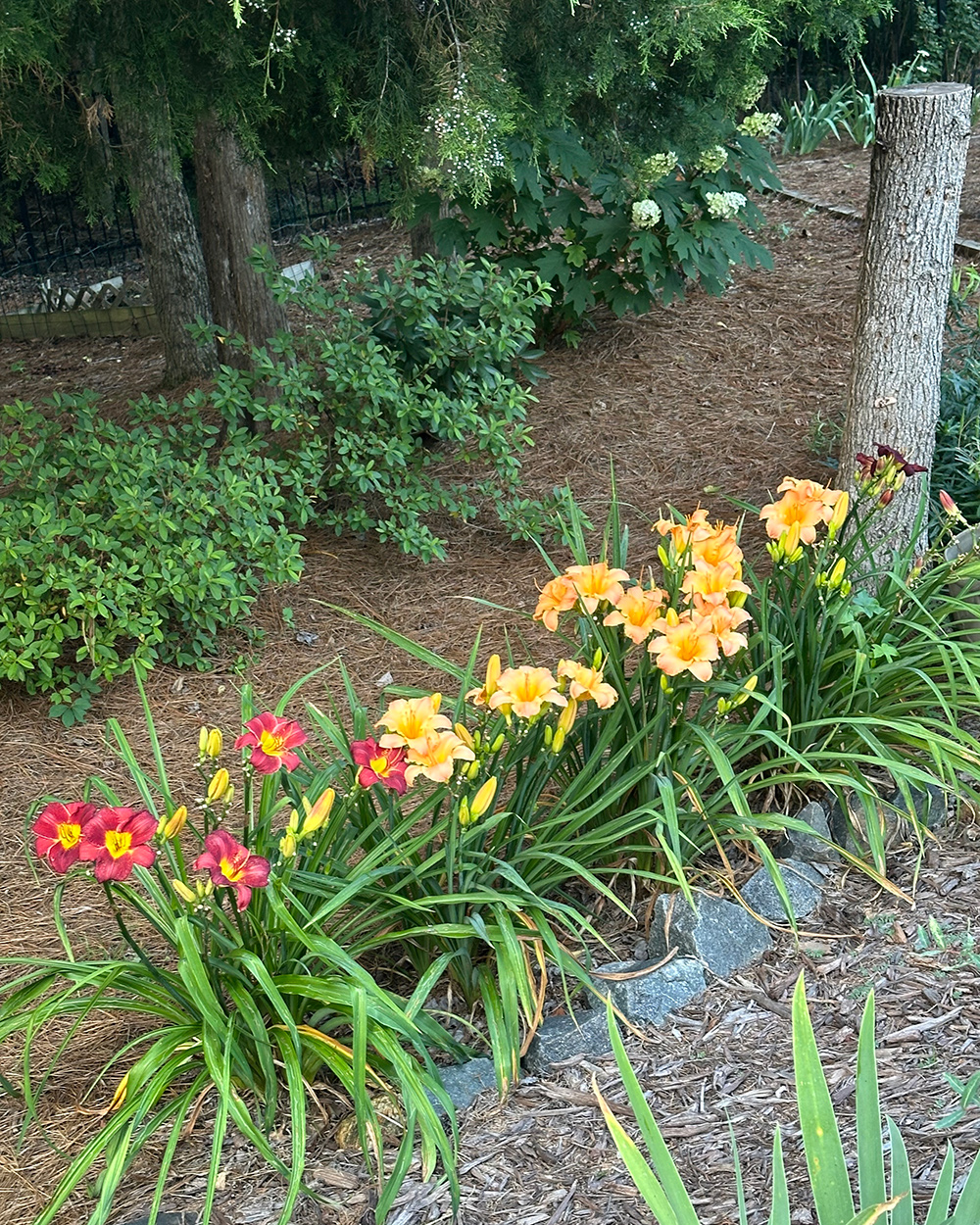 Lastly, a row of daylilies at the edge of a wooded area add a border of color before transitioning to more shade-tolerant blooms. Even a narrow strip in the garden can be a great opportunity for more flowers!
Lastly, a row of daylilies at the edge of a wooded area add a border of color before transitioning to more shade-tolerant blooms. Even a narrow strip in the garden can be a great opportunity for more flowers!
Thank you so much for these highlights of your summer garden so far, Beth! Even if intense heat hampers this colorful and lush display, the time you do have with these incredible flowers must be magical.
How has summer been in your garden this year? While some of us are already counting down to the first official day of fall and will be welcoming cooler temperatures with open arms, we still want to celebrate summer here at Garden Photo of the Day. Before fall foliage pictures flood our inbox, make sure your summer garden gets the attention and admiration it deserves. Follow the directions below to submit photos via email, or send me a DM on Instagram: @agirlherdogandtheroad.
We want to see YOUR garden!
Have photos to share? We’d love to see your garden, a particular collection of plants you love, or a wonderful garden you had the chance to visit!
To submit, send 5–10 photos to [email protected] along with some information about the plants in the pictures and where you took the photos. We’d love to hear where you are located, how long you’ve been gardening, successes you are proud of, failures you learned from, hopes for the future, favorite plants, or funny stories from your garden.
Have a mobile phone? Tag your photos on Facebook, Instagram, or Twitter with #FineGardening!
Do you receive the GPOD by email yet? Sign up here
Fine Gardening Recommended Products
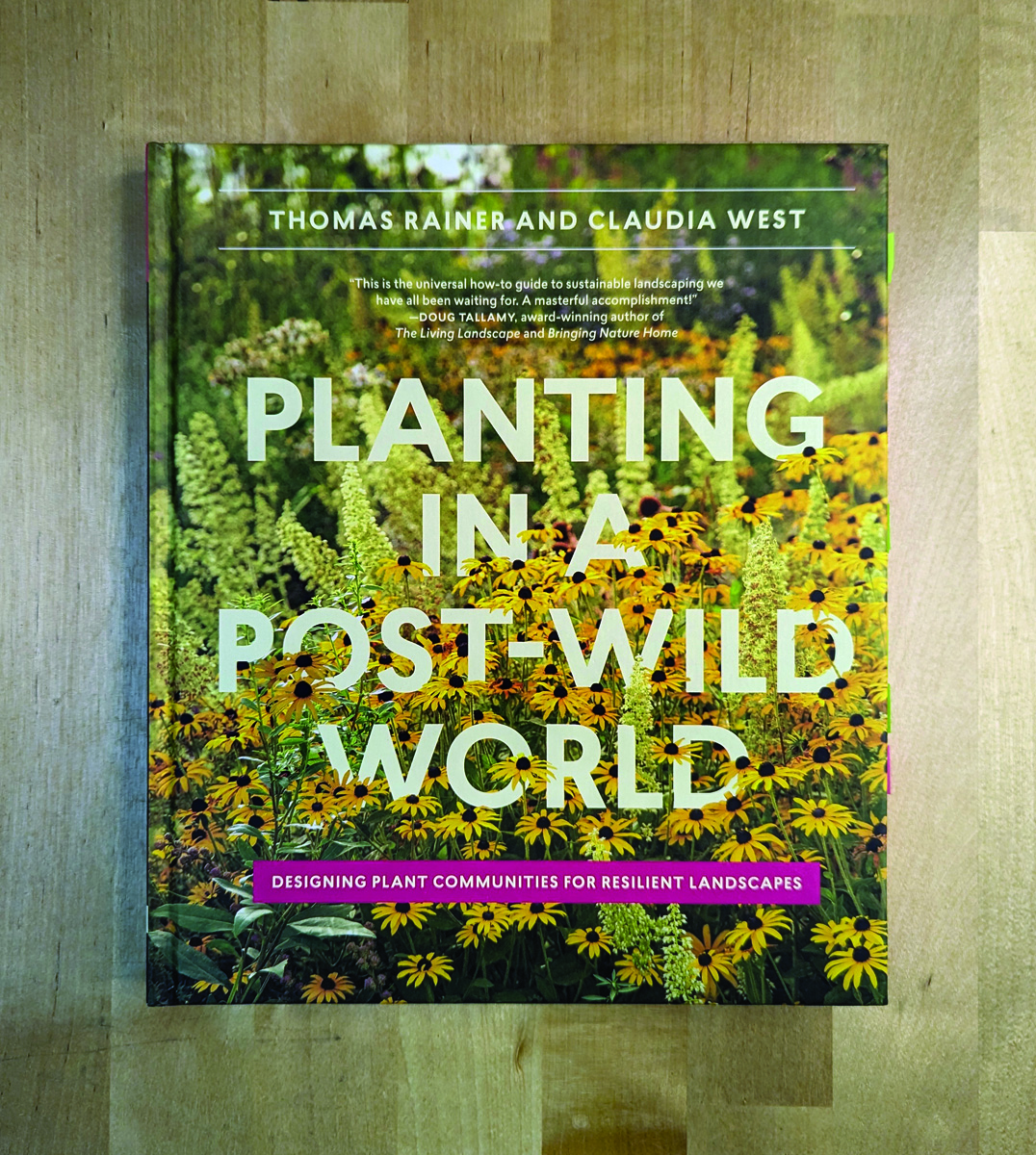
Planting in a Post-Wild World: Designing Plant Communities for Resilient Landscapes
Fine Gardening receives a commission for items purchased through links on this site, including Amazon Associates and other affiliate advertising programs.
Featuring gorgeous photography and advice for landscapers, Planting in a Post-Wild World by Thomas Rainer and Claudia West is dedicated to the idea of a new nature—a hybrid of both the wild and the cultivated—that can nourish in our cities and suburbs.
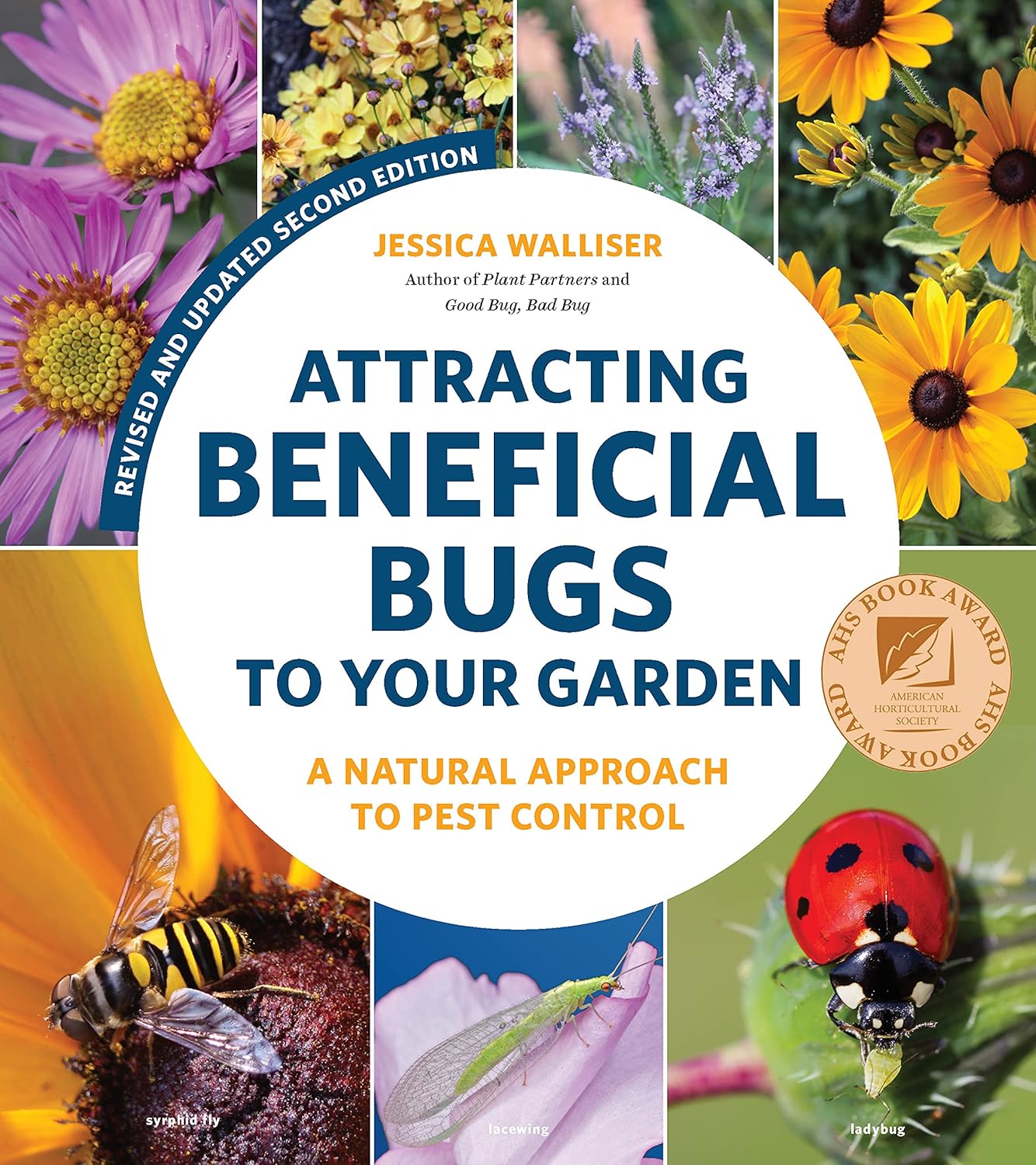
Attracting Beneficial Bugs to Your Garden, Revised and Updated Second Edition: A Natural Approach to Pest Control
Fine Gardening receives a commission for items purchased through links on this site, including Amazon Associates and other affiliate advertising programs.
This revised and updated edition of Jessica Walliser’s award-winning Attracting Beneficial Bugs to Your Garden offers a valuable and science-backed plan for bringing balance back to the garden. With this indispensable gardening reference—now updated with new research, insights, and voices—learn how to create a healthy, balanced, and diverse garden capable of supporting a hard-working crew of beneficial pest-eating insects and eliminate the need for synthetic chemical pesticides.

The Crevice Garden: How to make the perfect home for plants from rocky places
Fine Gardening receives a commission for items purchased through links on this site, including Amazon Associates and other affiliate advertising programs.
A crevice garden replicates the environmental conditions of mountain tops, deserts, coastlines, and other exposed or rocky places on earth. These striking garden features provide perfect conditions for the plants native to these far-off places, bringing the cultivation of these precious gems within everybody’s reach.


